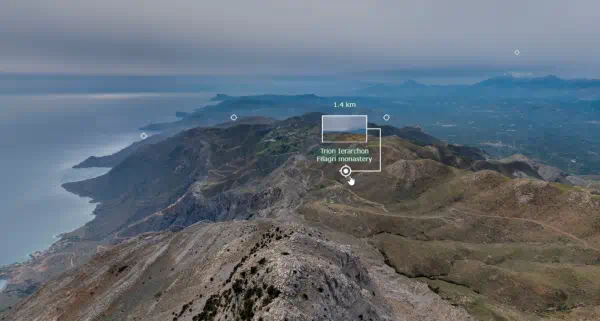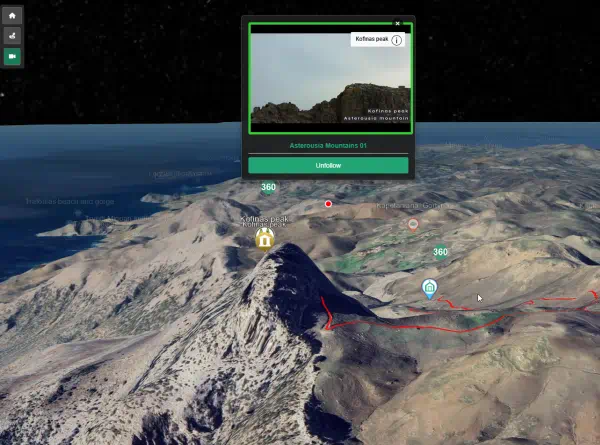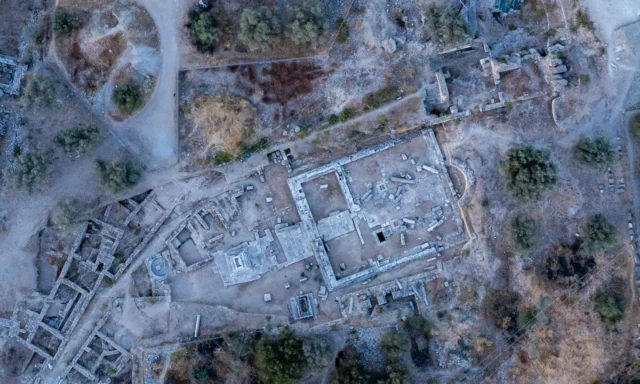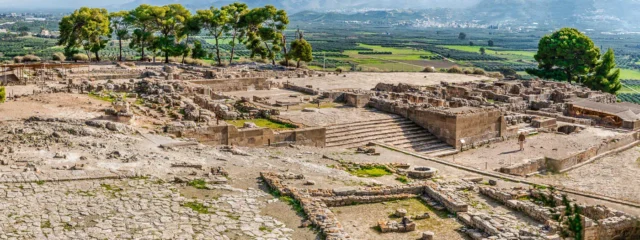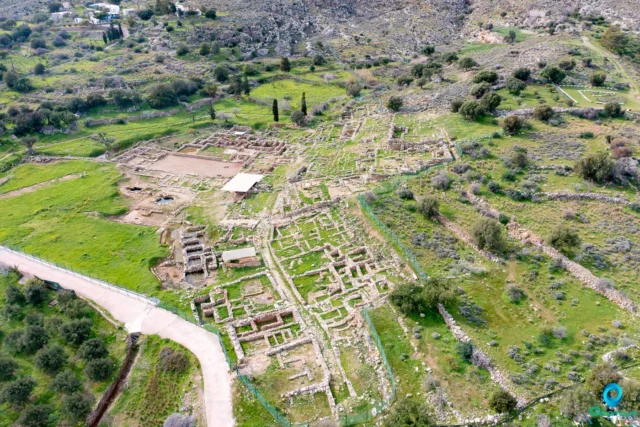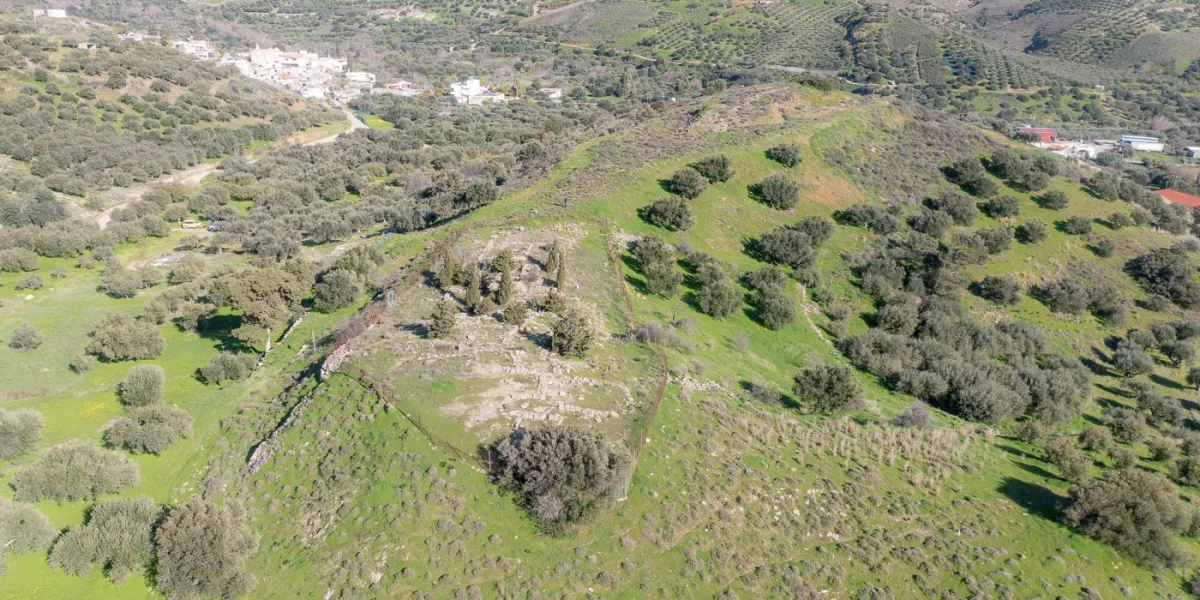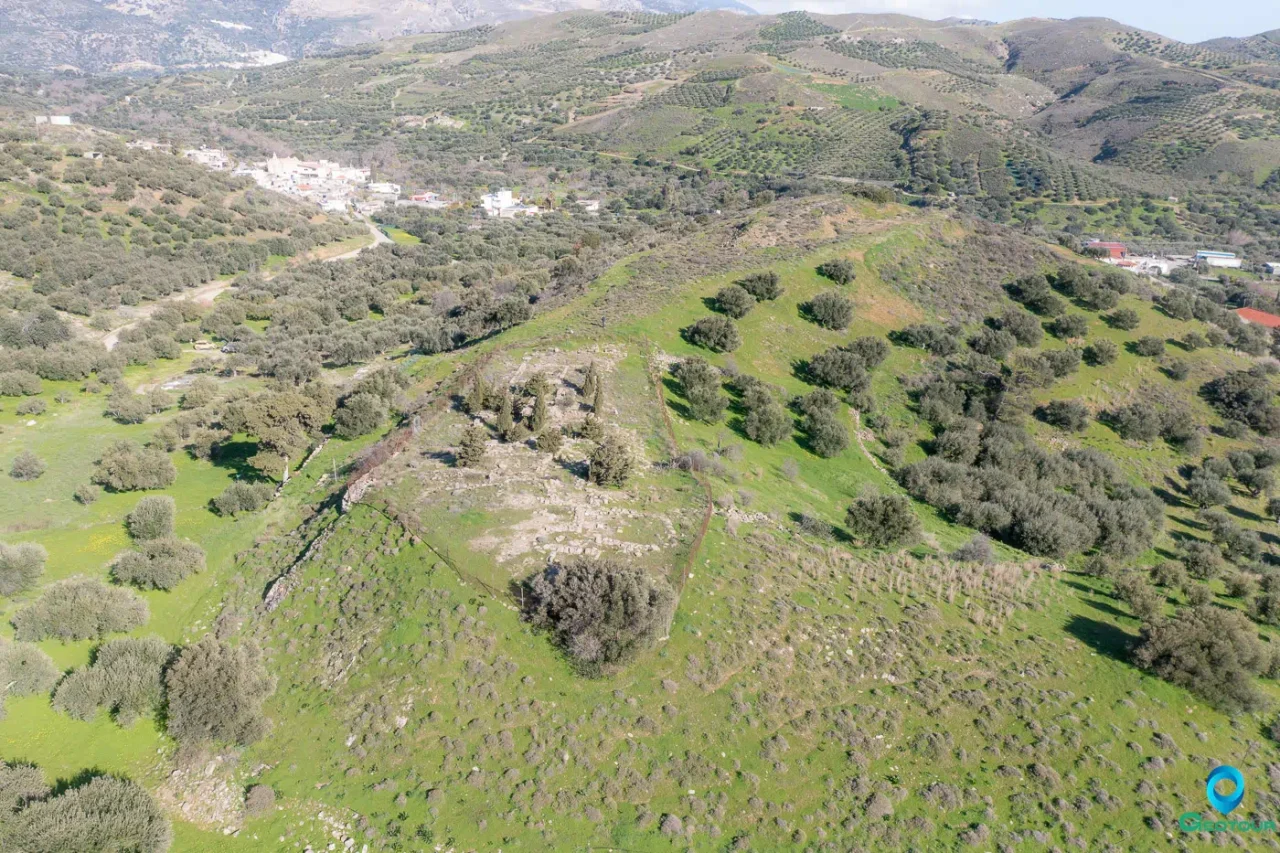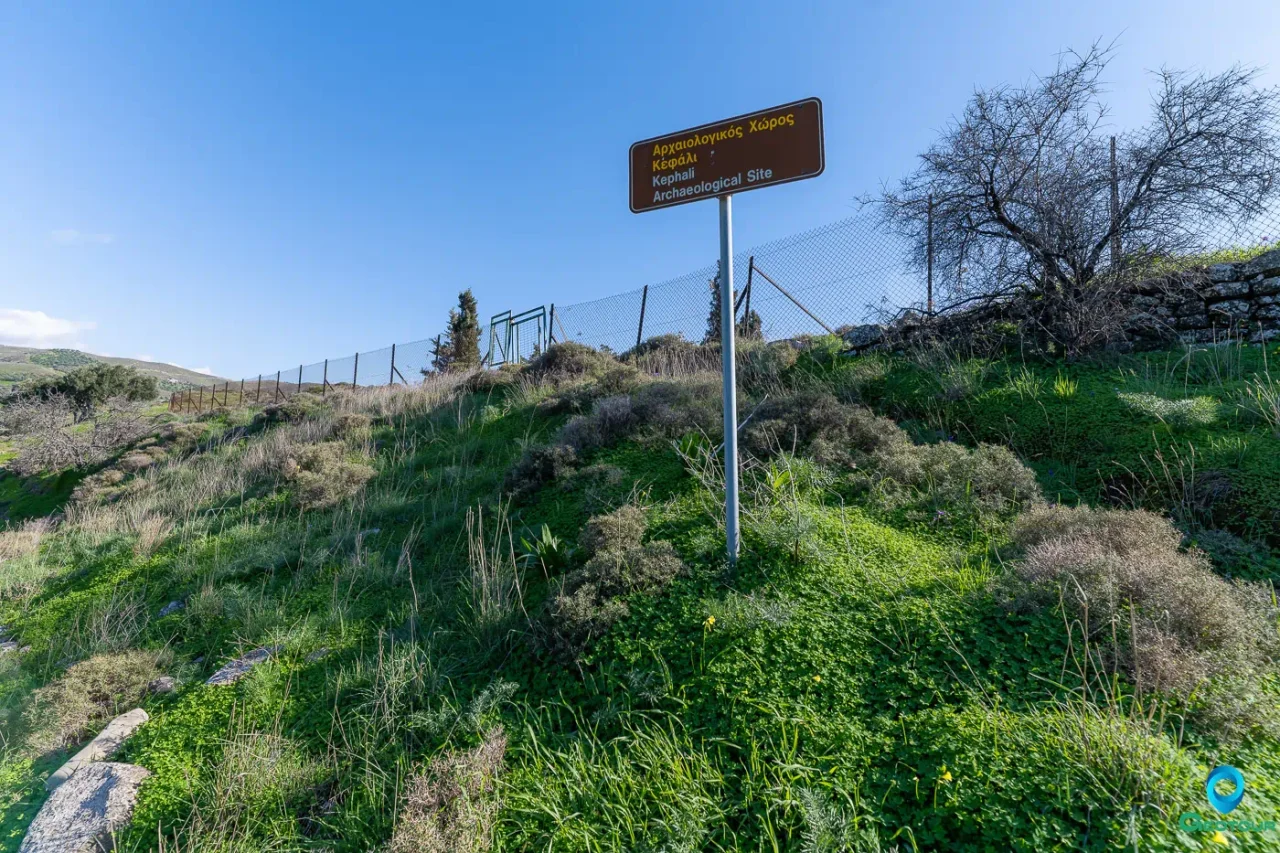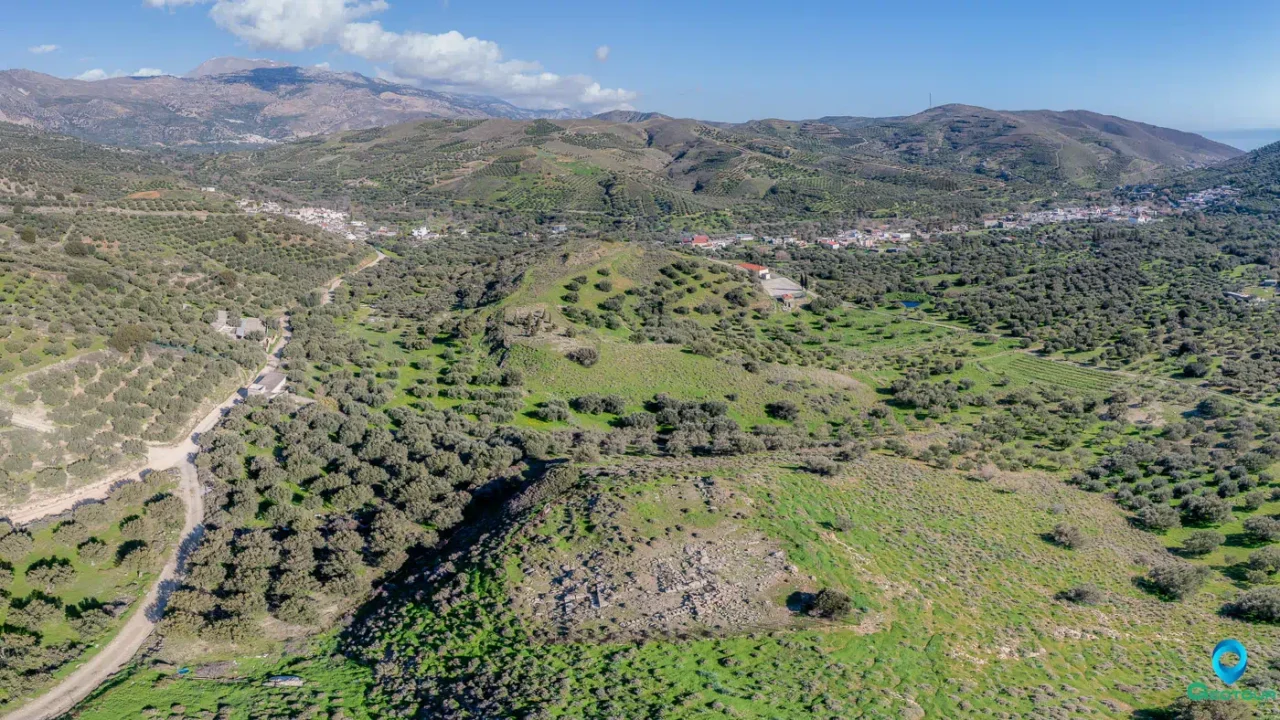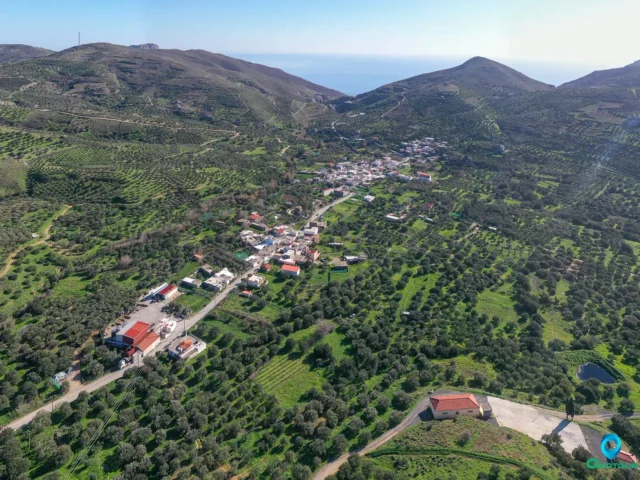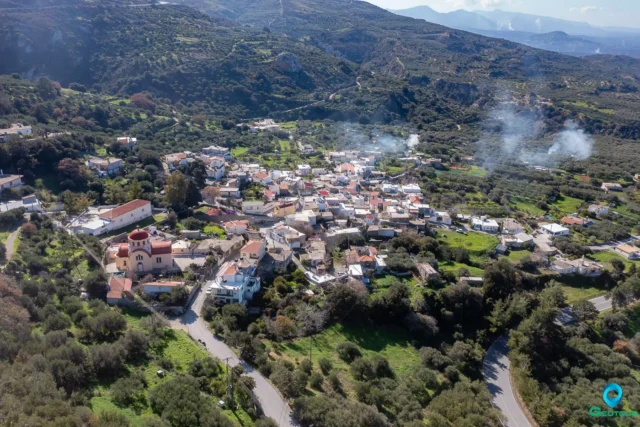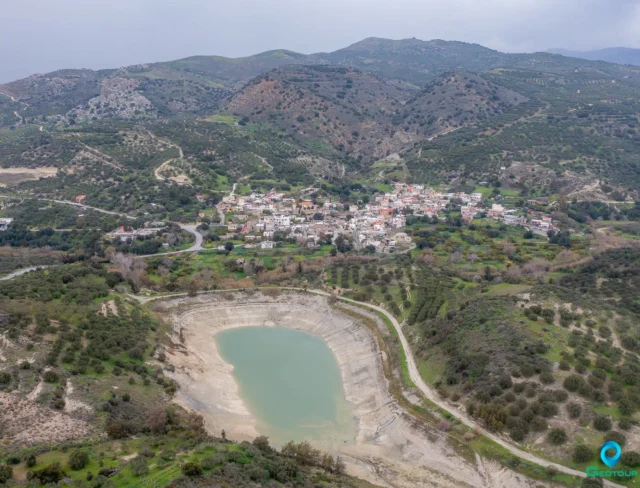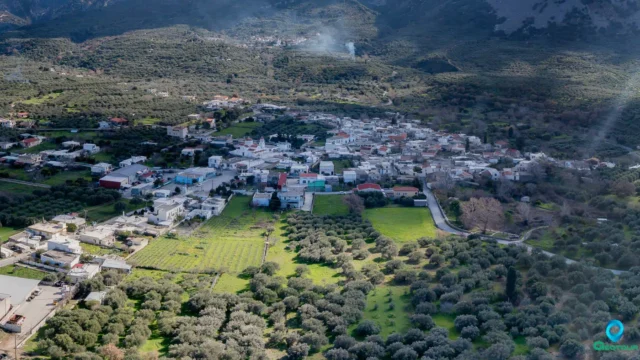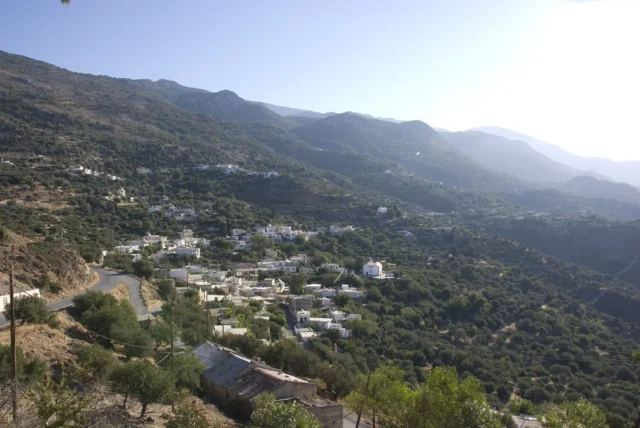The Kephali Hill Range Archaeological Complex, Chondros Viannou
The Kephali Hill Range, located near the modern village of Chondros Viannou in eastern Crete, is a multi-period archaeological complex of profound significance. It is not a single settlement but a landscape of contiguous sites spanning three hills, which together illustrate the region’s socio-political evolution from the Neopalatial period to the end of the Bronze Age. The complex’s primary importance lies in its clear demonstration of a transition from an elite, sophisticated Neopalatial “country villa” (Middle Minoan IIIB–Late Minoan IA) to a large, organized post-palatial town (Late Minoan III). This unique juxtaposition provides a crucial window into the changing settlement patterns, architecture, and social structures of Minoan Crete outside the major palatial centers.
Chronological History
- Neopalatial Period (MM IIIB–LM IA): The earliest major occupation is represented by a large, architecturally sophisticated building on the western hill (Kephali Lazana), which functioned as a high-status country villa. Constructed with both economy and elaborate cut-stone features, it served diverse domestic functions, including cooking, storage, and weaving, with potential for ritual activities. This villa represents the height of Neopalatial influence in the region.
- Destruction & Transition (c. 1600 BCΕ): The Neopalatial villa was destroyed by a significant earthquake around 1600 BC. In the aftermath, many of its finest hewn blocks were plundered and repurposed for new constructions.
- Post-Palatial Period (LM IIIA1-2): Following the Neopalatial era, a new, extensive settlement flourished on the central hill (Kephali Mikro). Evidence suggests an earlier occupation phase in the Middle Helladic III period, but it grew into a major post-palatial borough or town during the LM IIIA1-2 period. This town, which reused materials from the ruined villa, became the region’s primary center, showcasing a shift in social organization from a single elite dwelling to a larger communal settlement.
- Recent Past: The sites, particularly the villa on the western hill, continued to serve as a source for building materials, with hewn blocks being taken for the construction of local metochia (farm dependencies). This, combined with natural erosion, has contributed to the site’s current state of preservation.
Key Archaeological Discoveries
The complex’s discoveries span its different periods and loci. The most important excavated structures are the Neopalatial villa and the post-palatial town.
- Architectural Features: The Neopalatial villa is a roughly square building of at least 400 m², notable for its large, hewn stone blocks, monolithic thresholds, and robust walls capable of supporting an upper floor. In contrast, the post-palatial town on the central hill is an extensive complex of over 50 excavated rooms, which its excavator believed was the largest LM III structure known in Crete at the time. On the eastern hill, remains of Minoan settlements were identified but were too destroyed for further study.
- Significant Artifacts: Excavations yielded a wealth of artifacts indicative of daily life and ritual. Finds from the Neopalatial villa include pottery characteristic of the MM IIIB–LM IA period, loomweights, and stone grinders. The post-palatial town produced a vast trove of finds, including dozens of types of pottery (amphorae, hydriae, tripods, jugs, cups, skyphoi), stone vessels, lamps, and a steatite spindle whorl. Of particular importance are the ritual objects from this later settlement: a perfectly preserved natural triton shell and a unique plastic rhyton (ritual vessel) depicting a pregnant woman seated cross-legged, offering invaluable insight into LM III religious practices.
History of Excavations
The primary excavator of the Kephali complex was the renowned Greek archaeologist Nikolaos Platon. He conducted excavations across the central hill in 1956, 1957, 1959, and 1960, uncovering the extensive LM III town. In 1960, he also conducted the initial excavation of the Neopalatial villa on the western hill, which he first interpreted as a farmhouse. In 2004, the villa became the subject of a re-examination project by Eleni Mantzourani, Giorgos Vavouranakis, and Chrysanthos Kanellopoulos, as part of broader research into Neopalatial buildings in East Crete, which led to its re-interpretation as a high-status villa.
Current Status
The archaeological complex is in a variable state of preservation. The Neopalatial villa on the western hill is poorly preserved, having suffered from its initial earthquake destruction, subsequent stone robbing, and natural erosion, leaving an incomplete ground plan. The remains on the eastern hill are almost completely destroyed. The sources do not provide specific information regarding the current condition of the central LM III town or whether any part of the Kephali complex is an organized archaeological site open to the public with visitor facilities or entrance fees.
Key Takeaways
- Multi-Period Complex: The Kephali Hill Range is not a single site but a complex of settlements spanning the Middle Minoan IIIB to the Late Minoan III periods.
- Villa to Town: It uniquely showcases the historical transition from a single, elite Neopalatial country villa to a large, communal post-palatial town.
- Significant Discoveries: Key finds include the architectural remains of the villa and the 50+ room town, alongside important ritual artifacts like a triton shell and a rare rhyton of a pregnant woman.
- Excavation History: The site was primarily excavated by Nikolaos Platon in the mid-20th century, with the Neopalatial villa being re-examined by a modern research project in 2004.
References
- Daux, G., 1961. Chondros Viannou (éparchie 5). Bulletin de correspondance hellénique.
- Giorgos Vavouranakis, Eleni Mantzourani, 2011. The Minoan Villas in East Crete: Households or Seats of Authority? The Case of Prophitis Ilias Praisou. Hesperia Supplements 44, 125–135.
- Mantzouranē, H., Betancourt, P.P., Davaras, K. (Eds.), 2012a. Philistor: studies in honor of Costis Davaras, Prehistory monographs. INSTAP Academic Press, Philadelphia.
- Petrakis, V.P., 2006. Late Minoan III and Early Iron Age Cretan Cylindrical Terracotta Models: A Reconsideration. Annu. Br. Sch. Athens 101, 183–216. https://doi.org/10.1017/S0068245400021316
- Foteini Nikolakaki, 2022. The architecture and economy as “indicators” for the social position of the inhabitants of independent non-urban residences during the Neopalatial period in Crete (Thesis Diploma). National and Kapodistrian University of Athens.

